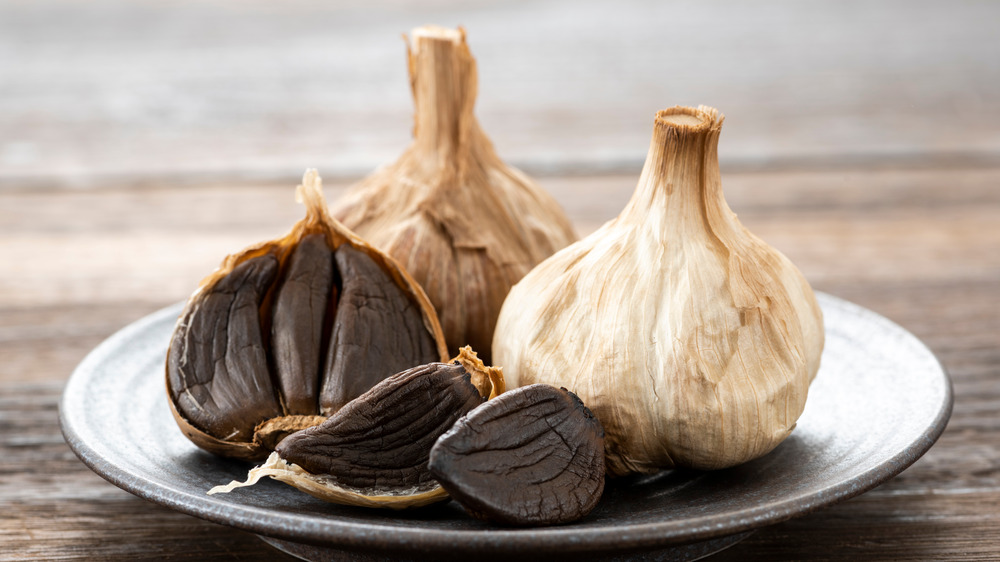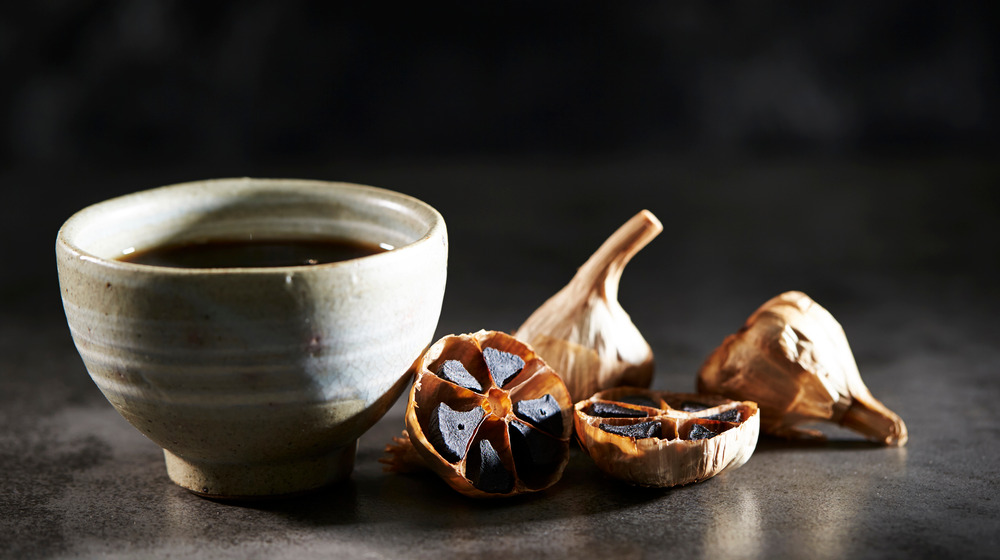You Should Never Mince Black Garlic. Here's Why
Garlic is a cooking staple that many of us can't live without. With such a range of flavor profiles — spicy, mellow, sweet, pungent — it goes well with a huge array of dishes and enhances pretty much everything it comes into contact with. While its versatility lends it to be added into many different scenarios, garlic can also be a bit of a liability. Proper preparation is necessary to make sure you aren't overpowering a pesto, creating an underwhelming sauce, or adding the dreaded burnt garlic taste to an entire stir fry.
There are also different types of garlic, each of which requires a bit of a different cooking technique. Cook's Illustrated lists soft-neck garlic as the most common type found in stores and used on a day-to-day basis, while some other garlic varieties include elephant garlic (which only has six cloves) and hardneck garlic (which has an intense flavor). The mag also lists black garlic, which is aged garlic that's fermented for 30 days in a machine that controls temperature and humidity, before being left out to air-dry for another 10 days.
Mincing black garlic ruins the flavor
The long fermentation process that is required for black garlic transforms the raw spicy and pungent flavor into something sweet and concentrated. The cloves turn a deep black, take on a chewy texture, and adopt a flavor profile reticent of a balsamic vinegar glaze or molasses accompanied by a garlicky aftertaste.
Cook's Illustrated explains that this highly unique and complex array of flavors disappears when the allium is minced, which negates the entire point of using it in the first place. Adding minced black garlic to a dish won't have the desired effect, and you'd be better off using ordinary garlic. However, if you roughly chop or slice your black garlic the flavors remain intact, preserving that sweet, balsamic-like taste. The Gousto Blog lists some ideas for using black garlic, such as blending it with mayonnaise for a delicious aioli, adding it to salads, adding it to olive oil, creating a chutney for a cheeseboard, mixing it into a homemade sauce, the list goes on. So, go on then get creative!

